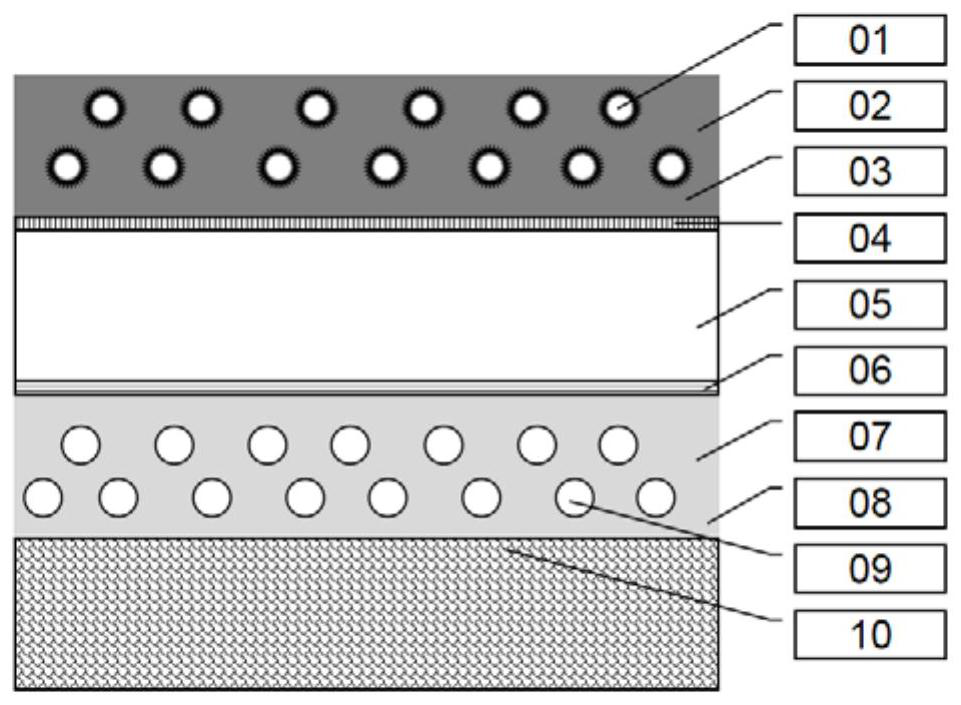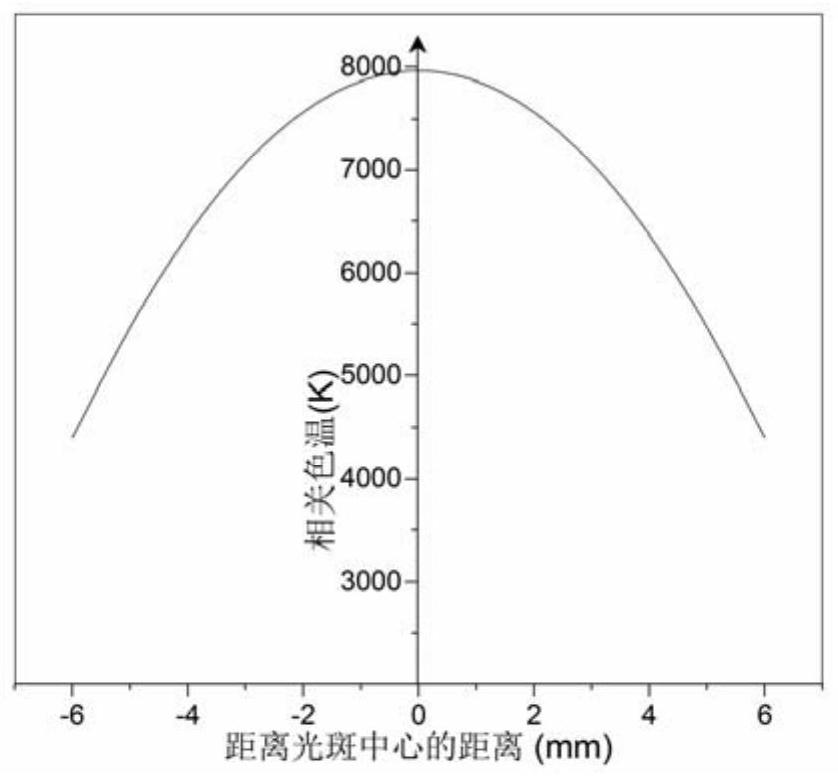A reflective blue light laser lighting component
A laser lighting and reflective technology, applied in the field of lighting, can solve the problems such as the increase of the temperature of the fluorescent substance, the decrease of the heat dissipation and thermal conductivity of the fluorescent substance, and the thermal quenching of the fluorescent substance.
- Summary
- Abstract
- Description
- Claims
- Application Information
AI Technical Summary
Problems solved by technology
Method used
Image
Examples
Embodiment 1
[0059] Will Y 3 al 5 o 12 : Ce fluorescent powder and low-melting point glass powder are mixed evenly according to the mass ratio of 1:1, and an appropriate amount of terpineol is added during mixing to adjust the viscosity of the slurry. Then the above slurry was painted onto a sapphire substrate coated with a reflective film that enhances yellow light reflection, the thickness of the painting was 100 μm, and the thickness of the substrate was 1 mm. Mix hollow alumina (outer diameter 2 μm, hollow diameter 0.4 μm) and low-melting point glass powder according to the mass ratio of 1:99, and add an appropriate amount of terpineol to adjust the viscosity of the slurry. Then the above slurry was painted onto a sapphire substrate coated with an anti-reflection film to enhance blue light transmission, and the thickness of the painting was 100 μm. Then put the substrate carrying the slurry (the surface coated with an anti-reflection film that enhances the transmission of blue light...
PUM
| Property | Measurement | Unit |
|---|---|---|
| wavelength | aaaaa | aaaaa |
| melting point | aaaaa | aaaaa |
| diameter | aaaaa | aaaaa |
Abstract
Description
Claims
Application Information
 Login to View More
Login to View More - R&D
- Intellectual Property
- Life Sciences
- Materials
- Tech Scout
- Unparalleled Data Quality
- Higher Quality Content
- 60% Fewer Hallucinations
Browse by: Latest US Patents, China's latest patents, Technical Efficacy Thesaurus, Application Domain, Technology Topic, Popular Technical Reports.
© 2025 PatSnap. All rights reserved.Legal|Privacy policy|Modern Slavery Act Transparency Statement|Sitemap|About US| Contact US: help@patsnap.com



